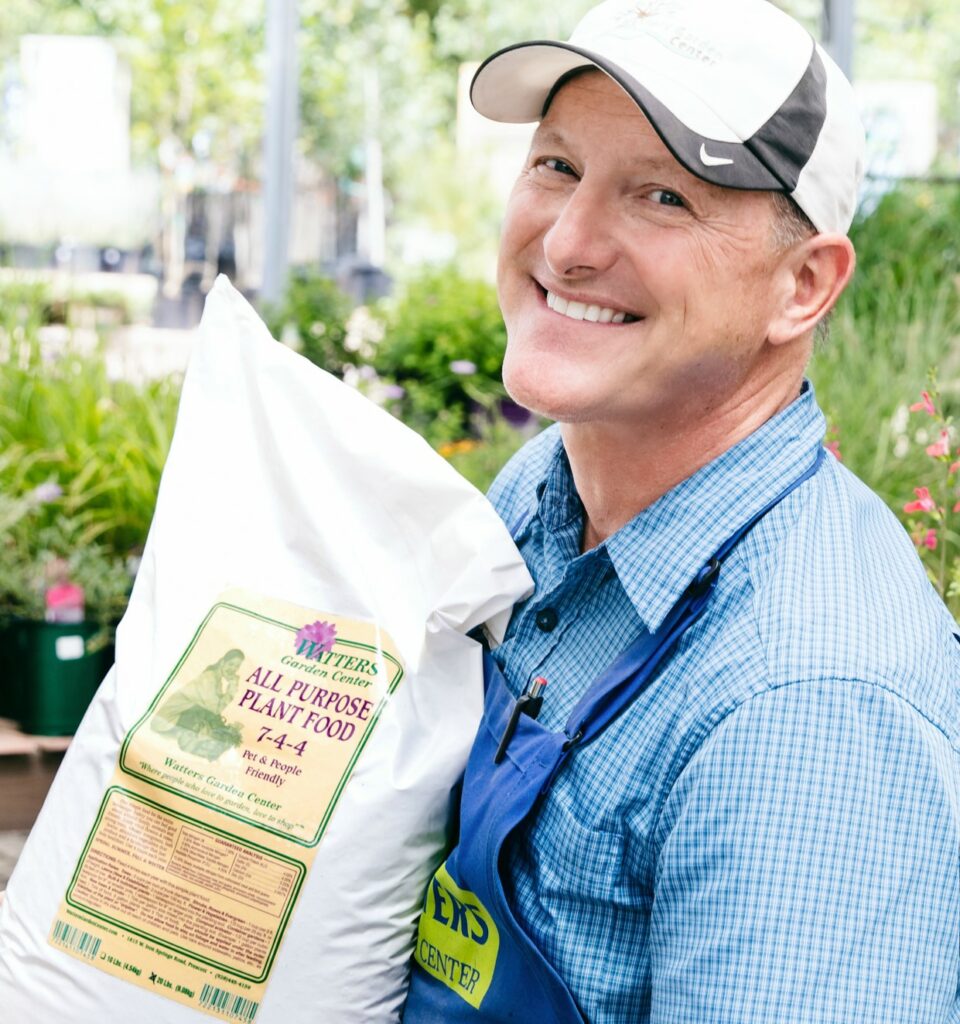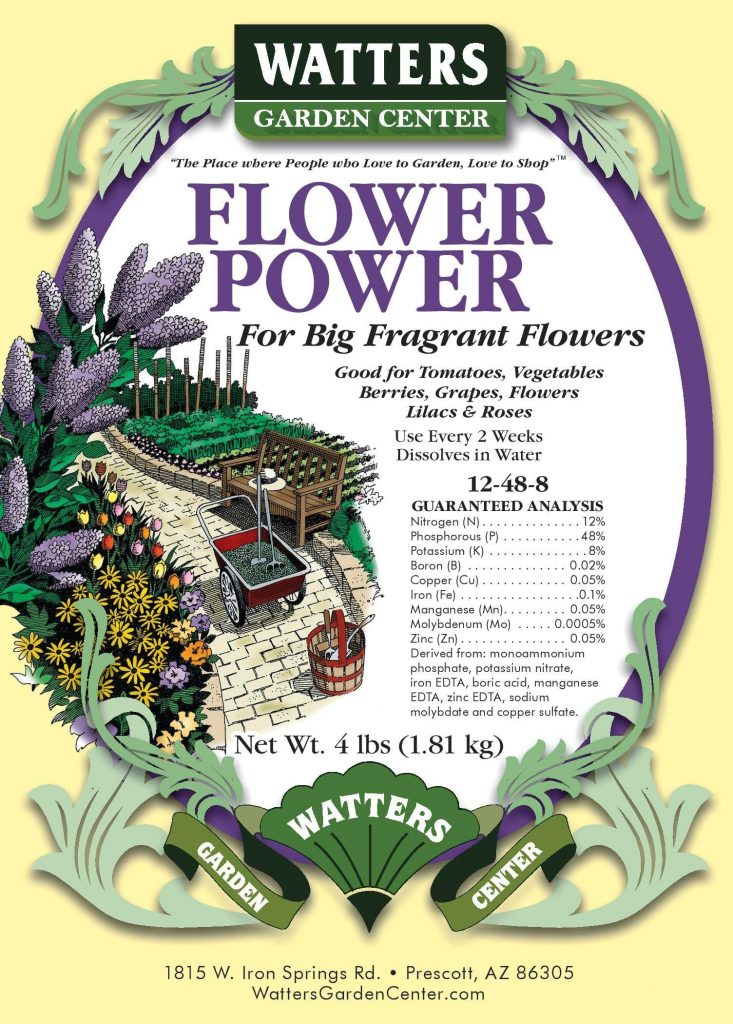by Ken Lain, the mountain gardener


Walk down any aisle of your local garden center, and you can’t help but notice the dizzying array of plant foods. You’ll see bags, bottles, powders, granules, sprays, and concentrates. Furthermore, you’ll discover more organic and “earth-friendly” plant foods. Which one is best for a healthy landscape? You must first make sense of a few plant nutrients to pick the best plant food.
Complete Plant Food
A complete fertilizer is necessary to supply plants with the three major elements they require to thrive: nitrogen, phosphorus, and potash. A balanced fertilizer or plant food is best served in spring, summer, fall, and winter.
Nitrogen (N): Promotes healthy foliage and leaves.
Phosphorus or Phosphate (P): Stimulates root systems, bud, and vegetable growth.
Potassium or Potash (K): Promotes stronger stems and aids in flower (and fruit) formation.

The fertilizer label will list the nutrients in the order of NPK, with numbers representing the percentage of nutrients compared to filler ingredients. For example, Watters 7-4-4 All Purpose Plant Food contains 7% nitrogen, 4% Phosphorus, and 4% Potassium. Filler ingredients are inert materials that add weight and volume to make the plant food easier to spread. For example, limestone, sawdust, and clay are used in powdered formulas, and water enhances liquid fertilizers. Fillers also add micronutrients like iron and sulfur to the mix for increased plant health and increased color.
Healthy flowers start with a vigorous root system, and a phosphate boost ensures your flowers get a good start. Flower fertilizers like Watters Flower Power, 12-48-8, have a significant percentage of phosphorus than other ingredients. The increased middle number also increases flower size and count and enlargers vegetables.
Chemical Fertilizers are inexpensive and widespread, but what are they?
Fertilizer manufacturers like Scotts, Miracle-Gro, Vigoro, and Ironite create artificial fertilizers by combining inorganic chemicals to form compounds like ammonium nitrate or magnesium sulfate. Chemical fertilizers are advantageous because rapid-growing plants take up their nutrients quickly, sometimes too fast.
Earth Friendly organics are better for plants and far safer for you, your pets, and your plants. Worms and other garden beneficials are killed by these synthetic fertilizers. Chemicals have a negative potential for drinking water as well. They release so rapidly that they can taint your drinking water and wells. Additional disadvantages include the risk of over-application, which causes burning, and the absence of any soil-improving qualities.
Springs, Summer, and Fall are the best seasonal dates to apply plant foods to the landscape. Local gardeners use Easter, July 4th, and Halloween as timely holiday markers for the best application dates. Evergreens benefit significantly with an additional application at New Year.

Foliar Fertilizer & Flower Power
Foliar fertilizers are liquid nutrients plants absorb through their leaves. Not all vegetable and flowering plants feed this efficiently because the wax and hairs on their leaves are a barrier to nutrient uptake. As a result, the plant cannot receive the needed nutrients. However, some nutrient deficiencies are addressed quickly by using foliar fertilizers. Potassium is one readily absorbed nutrient in a foliar feeding application, so foliar fertilizers are appropriate for treating potassium deficiencies.
If your flowers exhibit chlorosis or yellowing of the foliage, your plants may have an iron deficiency. Another situation is where the rapid results achieved by foliar plant foods are helpful.
Two-week intervals are best when using liquid or water-soluble plant food in the garden. This pattern brings out the fragrance and color of blooming plants.
Organic Fertilizer Benefits
Organic fertilizers come from living things like barnyard manure, fish emulsion, leaf mold, and non-living material like rock phosphate and greensand.
Fertilizers from organic matter supply essential nutrients to your plants and improve soil strength and texture. Even gardeners who don’t eat what they grow still appreciate organic plant foods because they: Don’t burn plants, Strengthen your plants’ immune systems, Are non-toxic to beneficial insects and wildlife, and Remain active in the soil for extended periods.
Simple Fertilizer
Suppose a soil test reveals a deficiency of one primary nutrient. In that case, you can purchase a pure fertilizer containing only nitrogen, phosphorus, or potassium as a standalone ingredient. Simple fertilizers can be chemical or organic in makeup, like organic bonemeal 0-10-0.
Best Advice – I believe in organic plant foods because they are safer for humans, pets, and wild animals entering our landscapes. Feed everything in the landscape three times per year with Watters 7-4-4 ‘All Purpose Food,’ including container gardens and raised beds. The best application holidays to apply by are Easter, Independence day on July 4th, and Halloween. Halloween is the most important feeding of the entire year.
Ask for my free handout here at Watters Garden Center for those that want to go deeper into the 4 Steps of Proper Plant Food.
Until next week, I’ll be helping gardeners with plant foods here at Watters Garden Center.
Ken Lain can be found throughout the week at Watters Garden Center, 1815 Iron Springs Rd in Prescott, or contacted through his website at WattersGardenCenter.com or Top10Plants.com.

